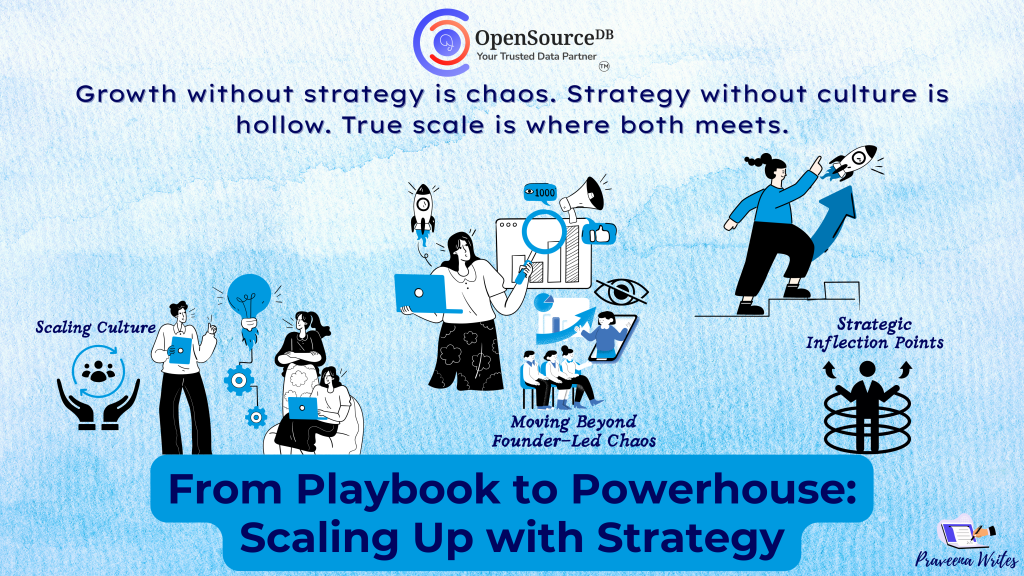
Every startup begins with a spark, an idea, a Founder’s vision, and a small, scrappy team ready to do whatever it takes. But as growth picks up, the same hustle-driven approach that fueled the early days can quickly turn into chaos. What worked for ten people breaks down at fifty. What worked for fifty may crumble at two hundred. Scaling isn’t simply about “doing more” It’s about evolving into an organization that can sustain growth without losing its culture, clarity, or momentum. That shift requires moving from founder-led intuition to a deliberate, process-driven strategy.
Moving beyond Founder-Led chaos
In the early days, decisions are fast and fluid. The founder knows every customer, approves every hire, and drives every strategic move. But as teams expand, this model becomes a bottleneck.
The transition to scale demands:
Clear processes: Repeatable systems that allow teams to execute without constant founder oversight.
Shared ownership: Empowering leaders at every level, not just at the top.
Defined priorities: A roadmap that keeps the company aligned as opportunities multiply.
Without this shift, companies risk burning out teams, confusing customers, and losing the very agility they once prided themselves on.
Scaling Culture as Deliberately as Systems
When people talk about “scaling,” they usually mean technology, revenue, or headcount. But culture is just as critical. A strong culture ensures new hires don’t just fill seats—they strengthen the DNA of the company.
Codify values: Move from unspoken norms to clearly articulated principles.
Model behaviors: Leaders must embody the culture they want to preserve.
Reinforce rituals: All-hands meetings, onboarding sessions, and recognition practices create shared identity even as the team grows.
Scaling systems without scaling culture leads to growth without cohesion—a recipe for fragmentation.
Strategic Inflection Points: Expand, Hire, or Raise?
Every scale-up faces moments where the old playbook no longer fits. The key is recognizing these inflection points before they become crises.
When to expand: Enter new markets when the core model is strong, not just because competitors are moving in.
When to hire: Bring in senior leadership not just to manage, but to build functions that can scale independently.
When to raise: Raise capital with a clear purpose—fueling growth engines, not patching inefficiencies.
Scaling is about making fewer, bolder decisions with greater impact. Each move should be intentional, not reactive.
The Takeaway
Scaling isn’t “more of the same.” It requires a new mindset—one that values process as much as vision, culture as much as systems, and strategy as much as speed.
The shift from playbook to powerhouse happens when leaders stop asking, “How do we keep doing what we’ve done?” and start asking, “What will it take to grow without breaking what makes us great?”
Final Thought: Growth without strategy is chaos. Strategy without culture is hollow. True scale is where both meet.
